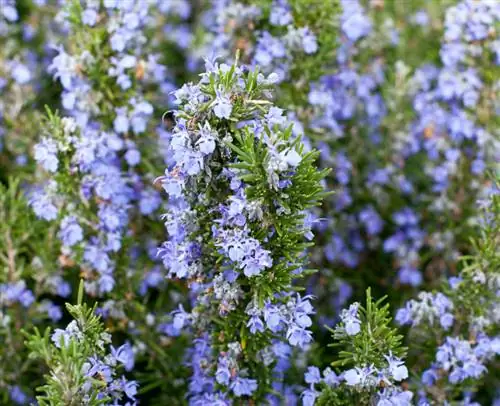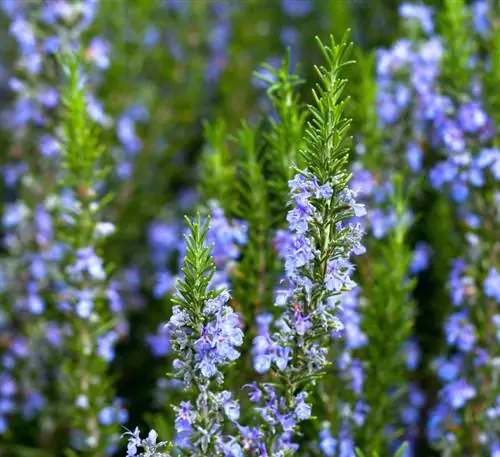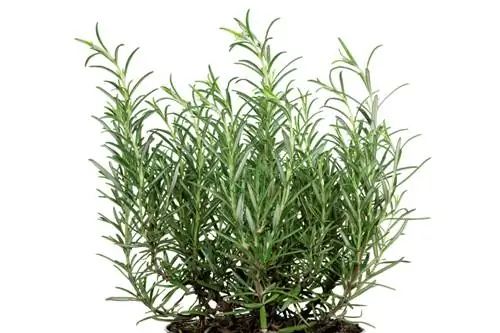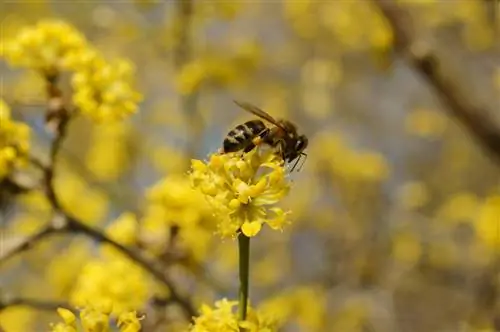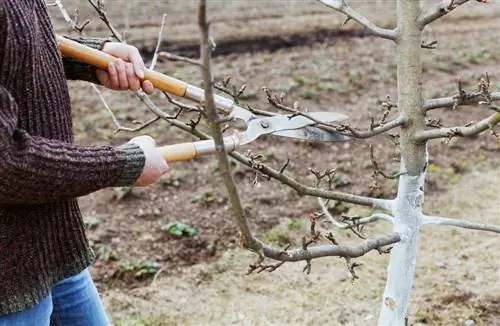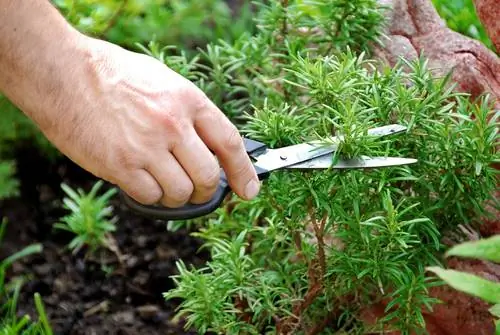- Author admin [email protected].
- Public 2023-12-16 16:46.
- Last modified 2025-01-23 11:20.
Rosemary is a subshrub whose older shoots first become woody and then become bare. Regular pruning is essential so that your beautiful plant does not become unsightly and unproductive with age. However, you can also take advantage of the woodiness of rosemary and grow a standard tree.

How to care for and use woody rosemary?
Woody rosemary can be rejuvenated by regular pruning, removing older shoots and encouraging new growth. Alternatively, a rosemary stem can be grown by maintaining a main shoot and trimming side shoots.
Cut rosemary regularly
Herbs that are sensitive to frost, such as rosemary, should be shaped with a radical cut in spring if possible. On the one hand, however, you should be careful not to cut off the fresh, soft shoots - the older ones from the previous year must be removed. That's why the right time to cut is before the new shoots sprout. On the other hand, this time cannot always be adhered to, as it is better not to cut if night frosts are still forecast. There is a very solid reason for this: every rosemary has replacement buds that will sprout if the first tender shoot tips freeze in a late frost. If you cut them too early, you cut off these replacement buds and the plant can no longer sprout. Over the course of the year, prune the rosemary as evenly as possible during the harvest.
Raising a rosemary stem
For a home-grown rosemary stem, you first need an older, woody rosemary. Cut away all woody branches except for a single, upright one, as well as other side shoots. Only in the upper crown area are a few branches left that need to be trimmed into a pleasing crown shape. Do not cut into the woody parts, but leave a few centimeters of green wood left - rosemary, like so many sub-shrubs, no longer sprouts from old wood. As further care measures, you should regularly trim the new shoots so that they branch out nicely and grow together into a bushy crown. The best time for such a training cut is late spring or early summer, when the herb is in the “juice”. The timing is advantageous because the growing shrub will sprout again more quickly. In addition, the cuts heal faster.
Tips & Tricks
If possible, harvest entire branches rather than just individual needles or small twigs. What you don't use right away can be preserved in various ways.

